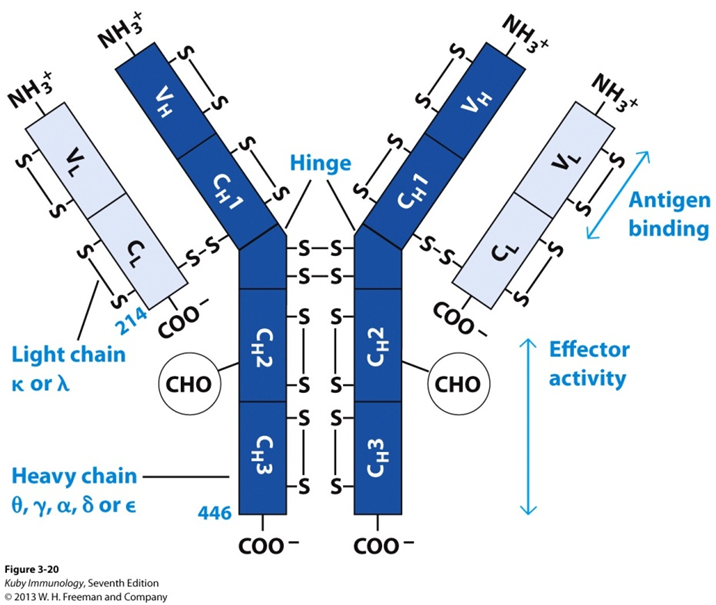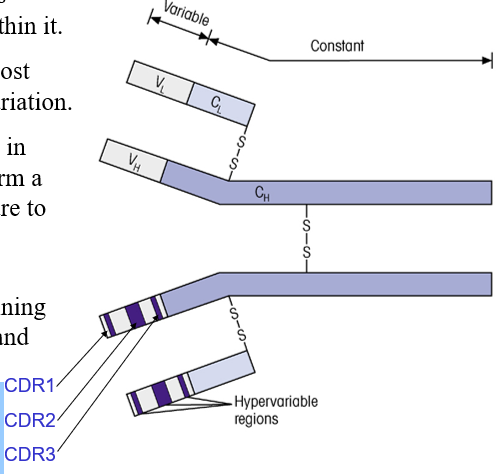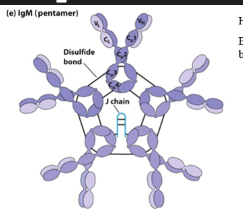Shafqat
1/23
Earn XP
Description and Tags
Name | Mastery | Learn | Test | Matching | Spaced |
|---|
No study sessions yet.
24 Terms
Where are antibodies found?
Free in serum
Free in secretions (mucous, milk, saliva, tears)
Surface of cells
Function of Antibodies
To binds to antigens with a complimentary shape and neutralise them.
Basic Antibody Structure
2 light chains
2 heavy chains
2 antigen binding sites

2 types of light chain
Kappa and Lambda
5 types of heavy chain
-Gamma
-Delta
-Epsilon
-Alpha
-Mu
How is diversity in an antibody produced
Through rearrangement of genes in the variable regionWhat
What binds chains together
disulphide bonds

what is the function of the hinge region
provide flexibility when binding to the antigen
What is a CDR
Complimentary Determining Regions
-Binds to antigens

Structure of Variable Region
Forms a beta-sheet structure to hold hypervariable regions in place
Stability of variable region?
More stable amino acid sequence than CDR
CDR interactions with antigen
Hydrogen bonding
Electrostatic Forces
Van Der Waals Forces
Hydrophobic Forces
5 antibody classes
IgG
IgD
IgE
IgA
IgM
Type of chains in each
IgA has alpha chains, IgD has delta chains etc.
IgA Structure
Dimer of 2 antibodies joined by a J polypeptide chain

IgM Structure
Pentamer of 5 Ig molecules with Mu chains

Functions of Antibodies
Immobilisation
Agglutination
Neutralisation
Opsonisation
Activation of Complement
Immobilisation of Bacteria (Antibodies)
Antibodies specific to flagella and cilia cause them to clump , preventing movement